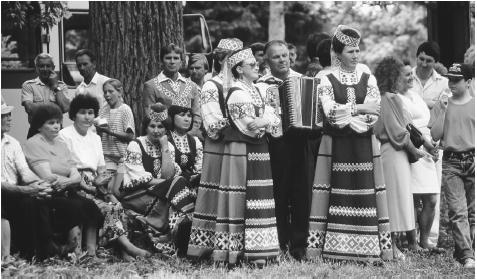History of Music in Poland
Musicians from Poland include popular composers such as Chopin or Lutoslawski and folk, regionalized traditional artists make a lively and...
http://worldhitz4u.blogspot.com/2014/02/history-of-music-in-poland.html
Musicians
from Poland include popular composers such as Chopin or Lutoslawski and folk,
regionalized traditional artists make a lively and different music scene which
even recognizes its own music genres like poezja spiewana (sung poetry).

source of picture: www.everyculture.com
The
root of Polish music is dated back from 13th century, from which
documents have been originate in Stary Sacz, comprising polyphonic compositions
linked to the Parisian Notre Dame School. Other early compositions such as the
melody of Bogurodzica, may also traced back to this time. The first known
renowned composer however, is known as Mikolaj z Radomia, lived during the 15th
century.
During
the 16th century mainly two orchestras which both of the group were
based in Krakow and belonging to the King and Archbishop of Wawel that led the
speedy invention of Polish music. Composers writing during this time comprise
Mikolaj Zielenski, Waclaw z Szamotul and Mikolaj Gomolka. Diomedes Cato, who is
a native-born Italian that lived in Krakow for five years and later became one
of the most popular lutenists at the court of Sigismund III, and not only
brought some of the musical patterns from the southern Europe, but combined
them with indigenous traditional music.
In
the last phrase of the 16th century and the early phrase of the 17th
century, a number of Italian artists were visitors at the royal courts of
Sigismund III Vasa and Wladyslaw IV. This included Giovanni Francesco Anerio,
Luca Marenzio and Marco Scacchi. Polish composers from this time concentrated
on baroque religious music, concertos for voices, instruments and bass
continuo, a custom that continued into the 18th century.
The
best-renowned composer of this time is known as Adam Jarzebsko, known for his
instrumental compositions such as Chromatica, Nova Casa, Bentrovata, Sentinella
and Tamburetta. Other composers comprise Bartlomiej Pekjel, Marcin Mielczewski,
Grzegorz Gerwazy Gorczycki, Franciszek Lilius and Sylwester Szarzynski.
In
addition, a custom of operatic creation started in Warsaw in 1628, with a
performance of Galatea (composer uncertain), the initial Italian opera produced
outside Italy. Shortly after the performance, the court made Francesca
Caccini’s opera La liberazione di Ruggiero dall’isola d’Alcina, which she had
written for Prince Wladyslaw and three years earlier when he was in Italy.
Another initial, is the earliest surviving opera written by a woman. When
Wladyslaw was a king (as Wladyslaw IV) he surprised the production of at least
ten operas during the late 1630s and 1640s, which makes Warsaw a point of the
art. The composers of these operas were unknown: they have made a Poles work
under Marco Scacchi in the royal chapel.
The
late 17th and 18th century saw a weak of Poland, which
also stopped the development of music. Some composers tried to make a Polish
opera such as Jan Stefani and Maciej Kamjenski, other copied foreign composers
like Haydn and Mozart.
The greatest important
improvement in this time, however, was the polonaise, possibly the initial
characteristically Polish art music. Polonaises for piano were remaining
renowned such as Michal Kleofas Oginski, Jozef Elsner, Henryk Wieniawski, Karol
Kurpinski, Mieczyslaw Karlowicz, Juliusz Zarebski and most notably, Fryderyk
Chopin. Chopin remains the most renowned and it is regarded for composing a
wide variety of composition which include waltzes, mazurkas, concertos and
nocturnes and use folk Polish elements in his pieces. 